Nexus 7 (2013) - Mini Review
by Brian Klug on July 27, 2013 12:54 AM EST- Posted in
- Tablets
- Snapdragon
- Qualcomm
- Android
- Mobile
- APQ8064
- Nexus 7
- Android 4.3
Last year the Nexus 7 debuted with a Tegra 3 SoC, which for reminder consisted of a 4+1 architecture of ARM Cortex A9 CPUs, with the 4 A9s built on 40nm G, and the +1 “shadow core” A9 built on 40nm LP (TSMC’s 40 LPG process), accompanied by ULP GeForce GPU with 12 cores running at a max GPU clock of 416 MHz. The exact SoC was NVIDIA’s Tegra 3 T30L, which could run one A9 at up to 1.3 GHz and all A9s at up to 1.2 GHz.
Rather than the relatively logical upgrade path of going to NVIDIA’s Tegra 4 SoC (I’ve heard all manner of speculation about what happened there), the new Nexus 7 switches to Qualcomm’s APQ8064–1AA, a version with 4 Krait 300 CPU cores (yes, Krait 300, not 200) running at up to 1.5 GHz and Adreno 320 graphics. Rather than use a PoP and LPDDR2, this specific APQ8064 variant goes to PCDDR3L–1600 MHz instead, including 4, 4Gb discrete 1.35V SK-hynix DRAM devices off to the side (more on the opposite side of the PCB) adding up to 2 GB of RAM. Qualcomm's Snapdragon S4 Pro and Snapdragon 600 branding gets confused here, although Qualcomm is calling the APQ8064 inside the Nexus 7 (2013) S4 Pro, it's more like an underclocked or lower binned Snapdragon 600.
At this point APQ8064 is probably the most well understood SoC in recent memory (so much so that I’m pining for devices to include something different just from an academic perspective) so I’ll spare the very verbal discussion about its performance.
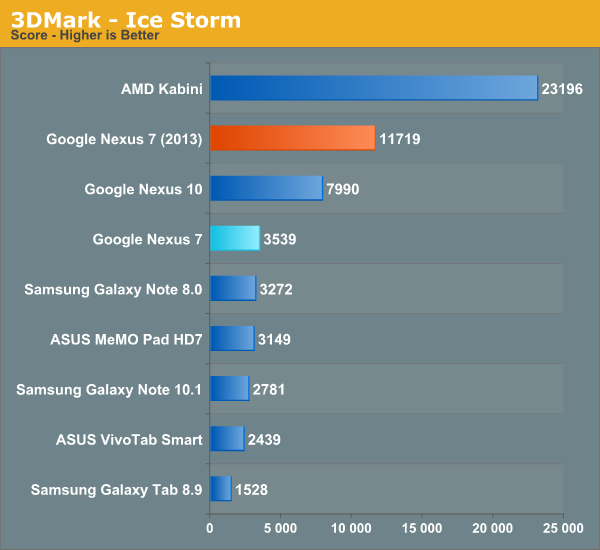
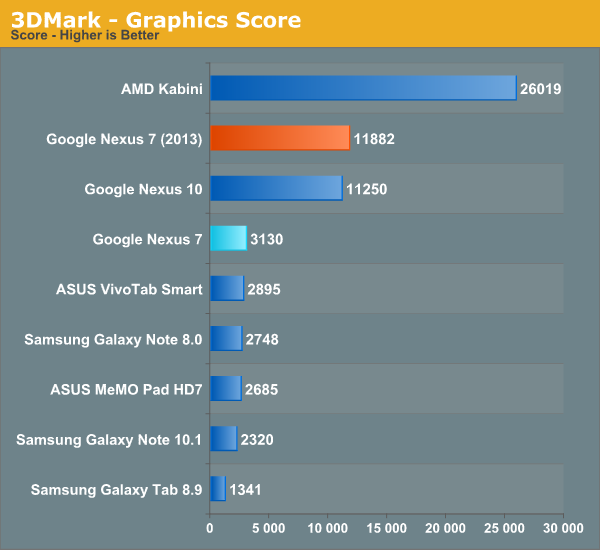
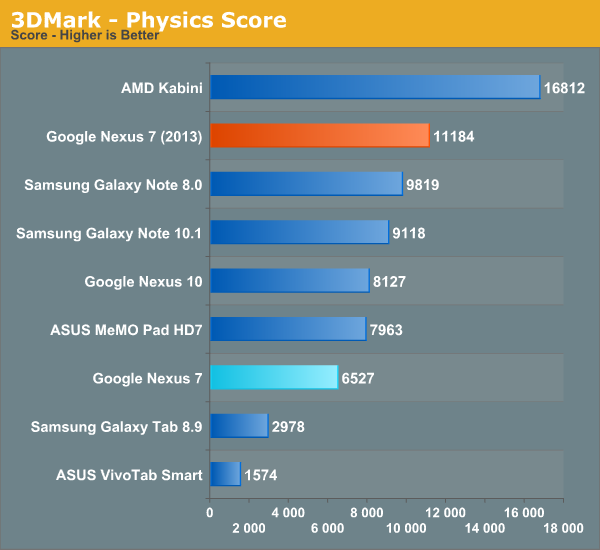
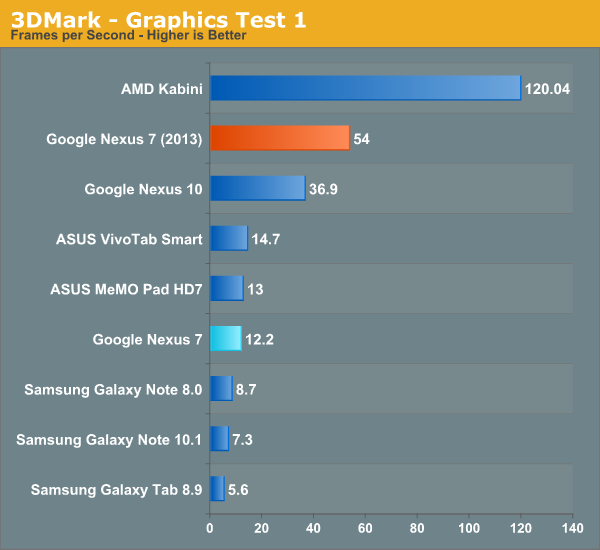



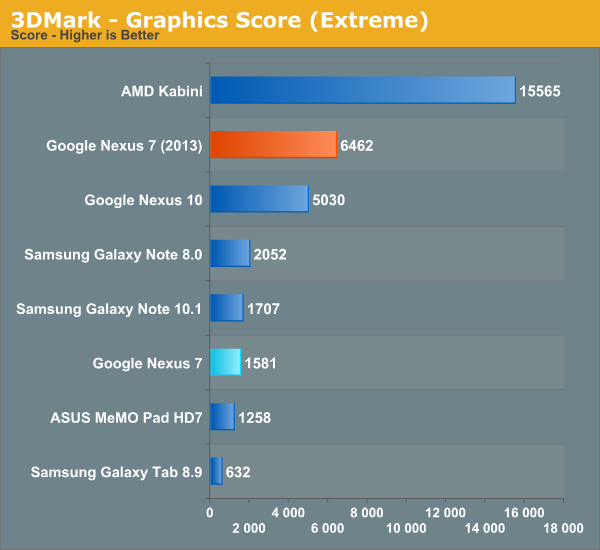
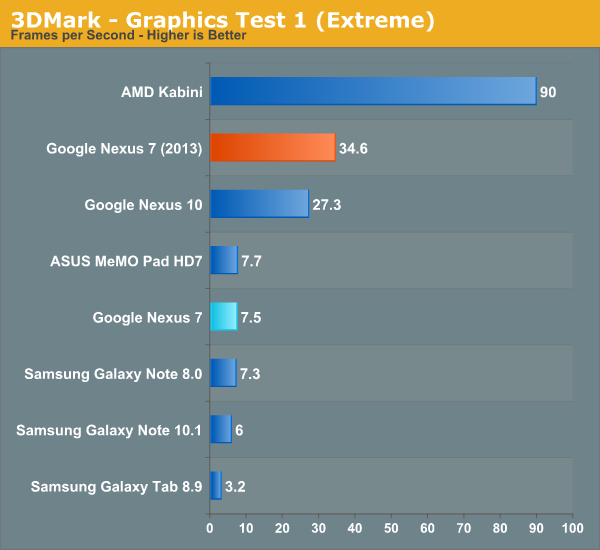
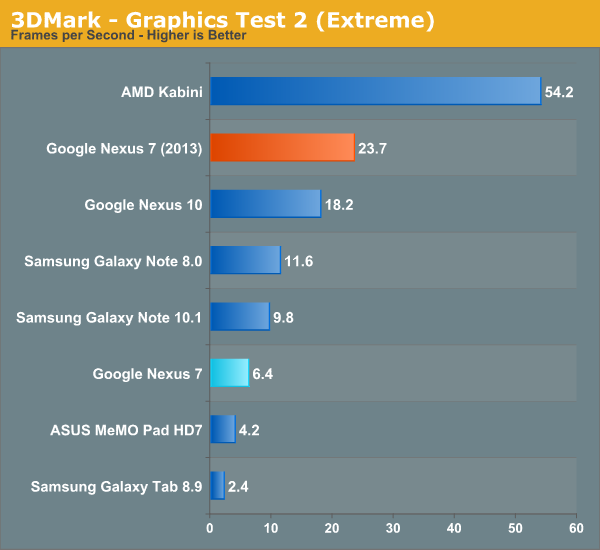


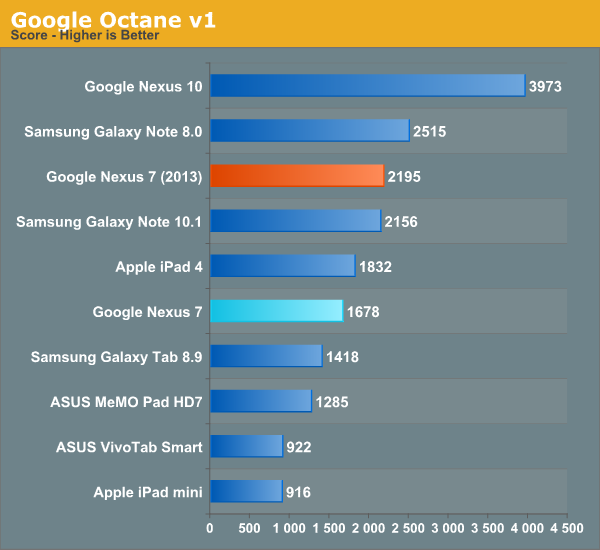
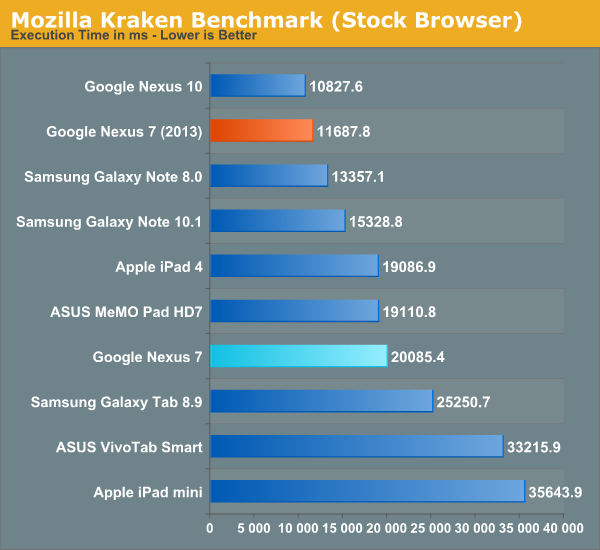
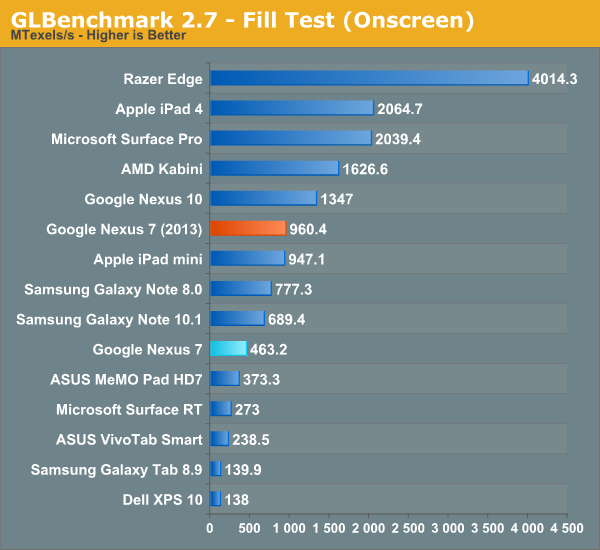

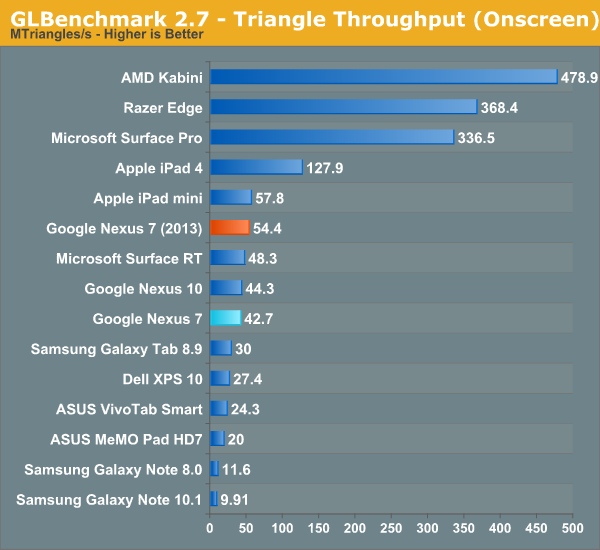
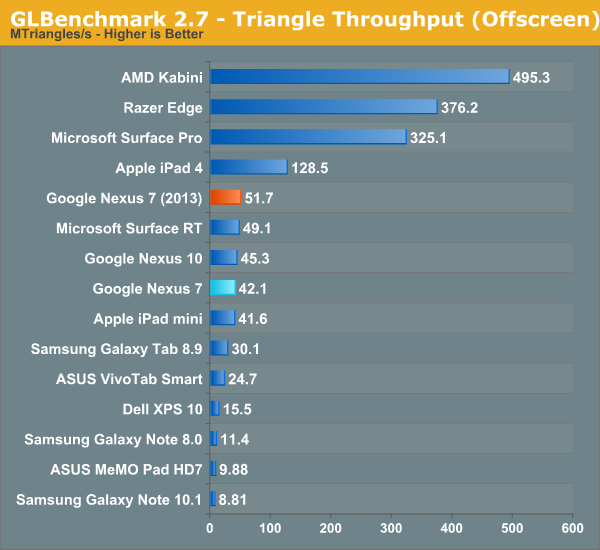
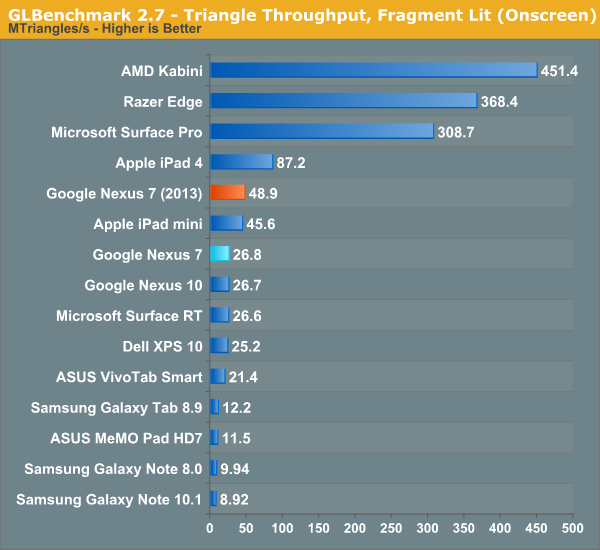
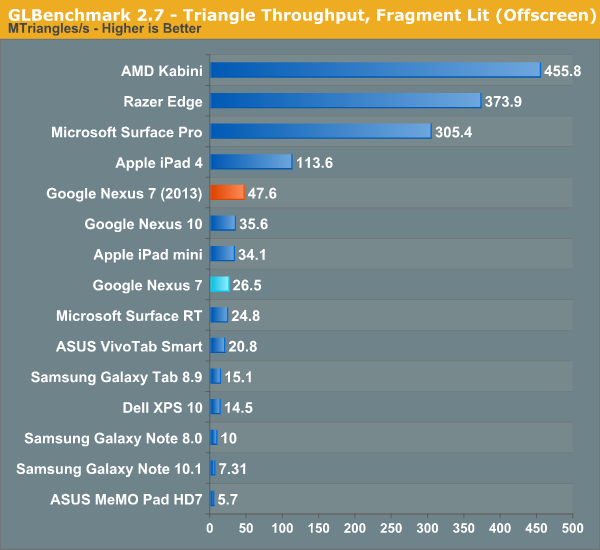

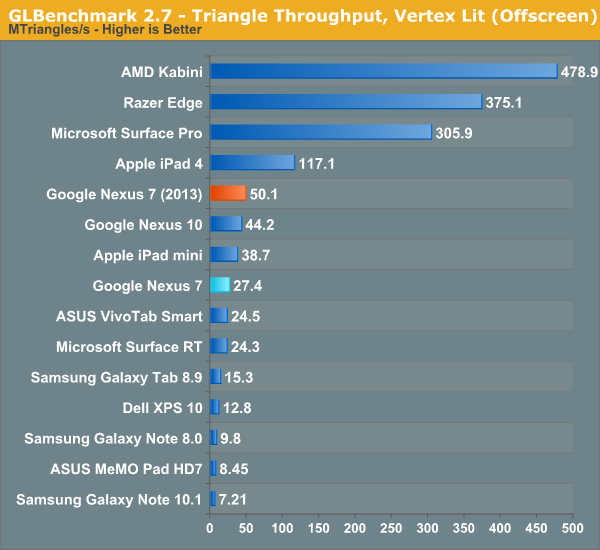
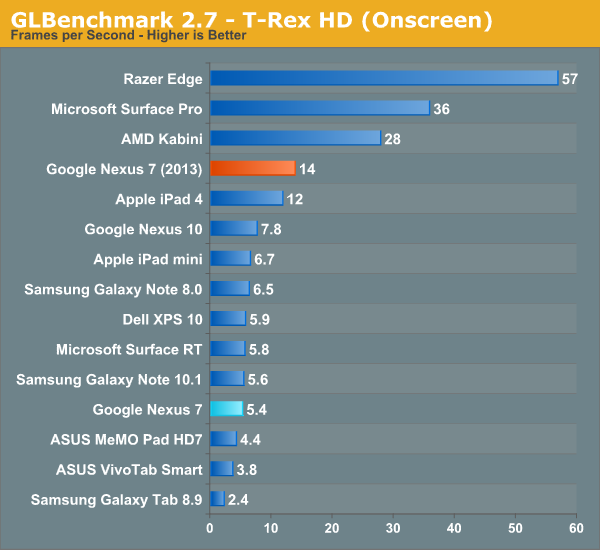
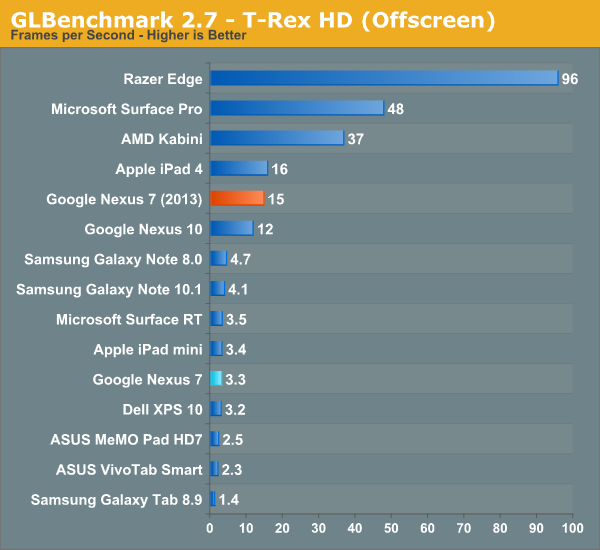
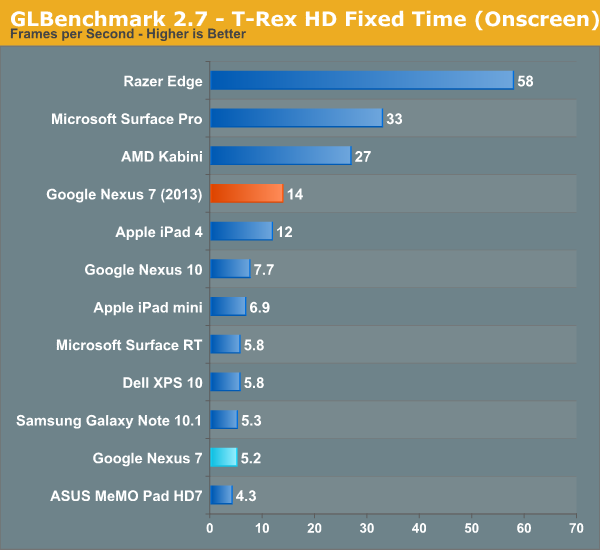
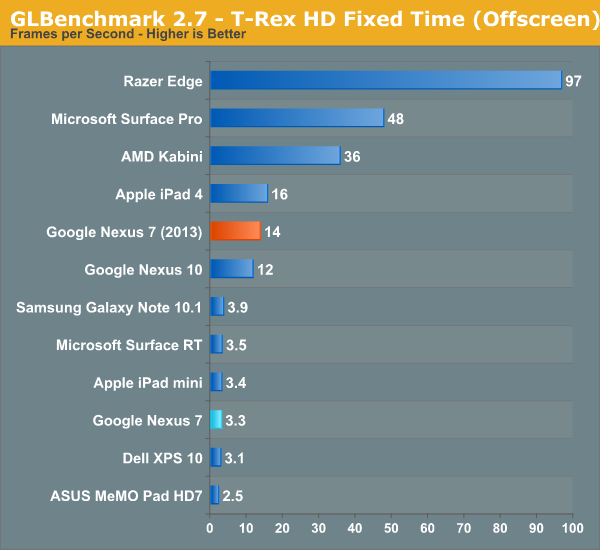
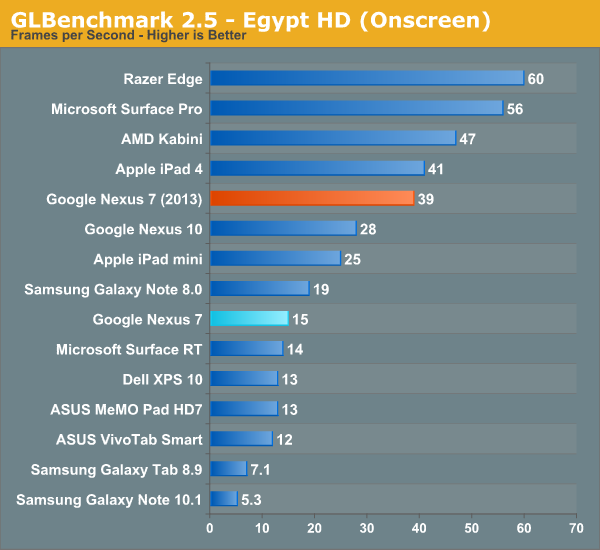
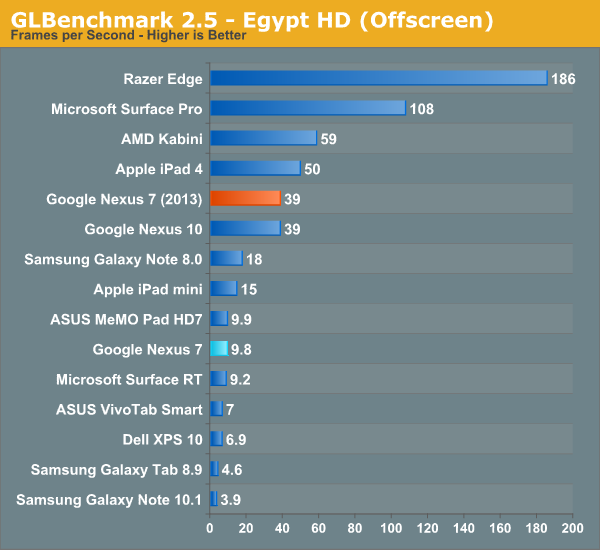
Suffice it to say, moving from 1.2–1.3 GHz Tegra 3 to 1.5 GHz APQ8064 represents a big jump forwards in performance. Google claimed 1.8x improvement on CPU performance, and 4x improvement on GPU, which gets validated pretty much consistently through the benchmarks. I never felt like Tegra 3 was a slouch by any means (performance was more I/O bound on the OG Nexus 7, which we’ll talk about in a moment), but the new Nexus 7 has ample performance for the considerable increase in screen resolution.
Dat eMMC
It wasn’t any secret with the original Nexus 7 that much of the real world performance was gated by storage I/O throughput – we wrote about it after all – and storage performance was a common complaint while multitasking on a few other previous and similar era ASUS tablets. Most of the time performance was acceptable, and for $200 you can’t complain too much about things, the issue was that further on in the life of the tablet performance began degrading somewhat notably, leading to complaints.
Obviously the first thing I did on the Nexus 7 (2013) was run Androbench with the same 100 MB settings to test and see what out of box I/O performance looks like. Things are much better with the new Nexus 7 than they were with the previous one, so at a high level all is good.
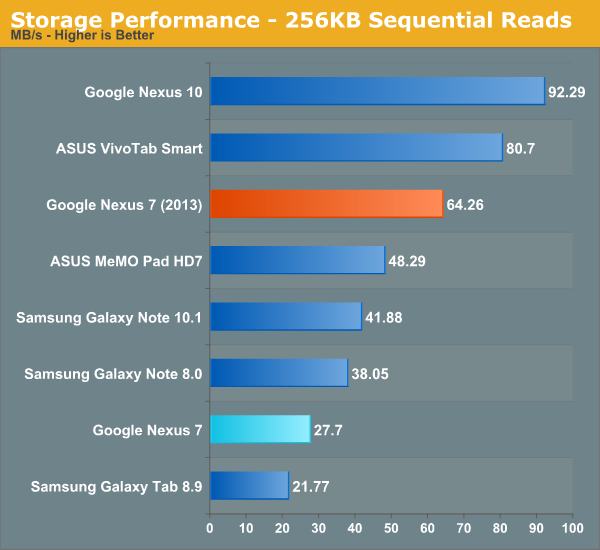
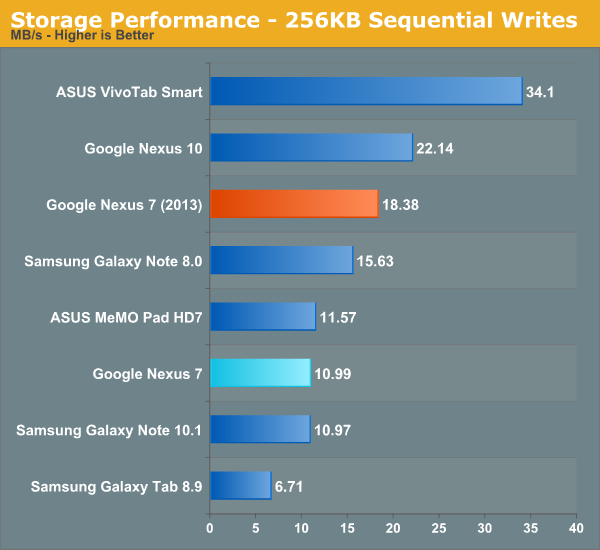
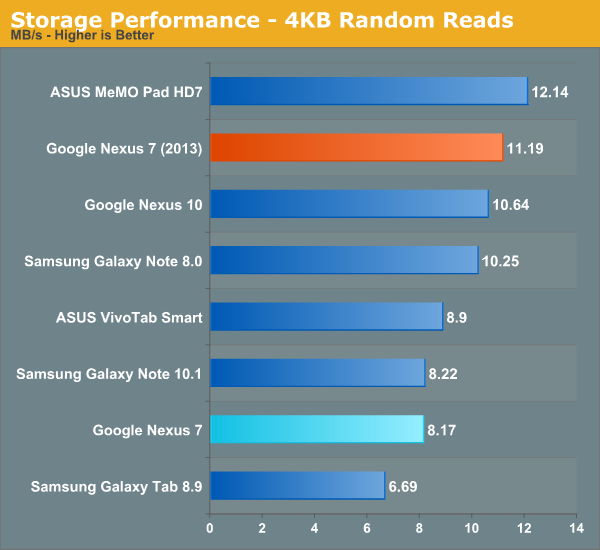

The story actually is a bit more involved however. One of the big problems was that the slowness which occurred with the prior Nexus 7 took device aging to appear – it was great for the first few months, but after you started loading it things tailed off. The new Nexus 7 (2013) with Android 4.3 includes support for fstrim, essentially idle garbage collection, which TRIMs the eMMC when a few conditions are met – the device is idle, screen off, and battery above roughly 70-percent. I’m told that TRIM support has been part of the eMMC standard since around version 4.2, it was just a matter of enabling it in software. The result is that the new Nexus 7 shouldn’t have these aging affects at all. Better yet, fstrim support has also been added to the old Nexus 7 with as of the Android 4.3 update, so if you’ve got a Nexus 7 that feels slow, I/O performance should get better after fstrim runs in the background. I'm checking on whether the other Nexus devices have also had TRIM support added. I would consider the slow storage aging problem fixed as of now, and Google took the eMMC and storage I/O performance issues with the previous Nexus 7 to heart for this version.


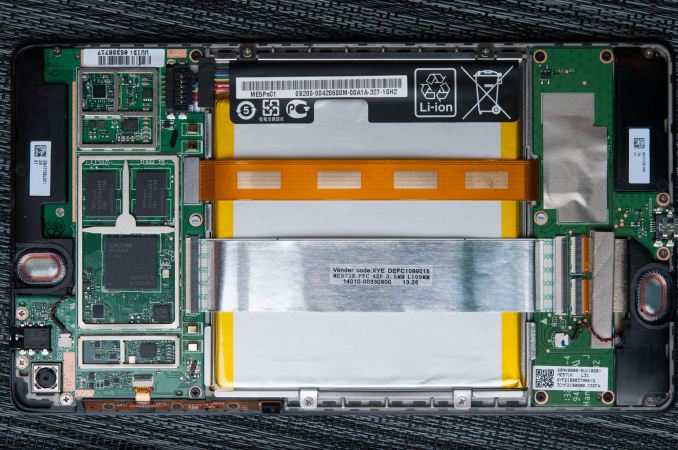
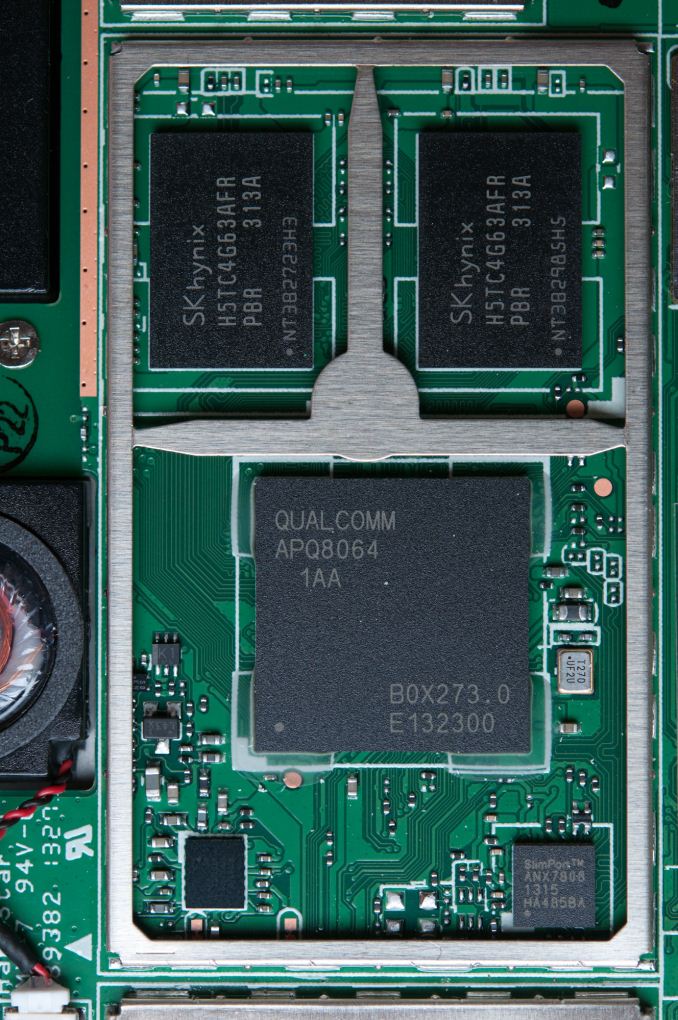














252 Comments
View All Comments
ven - Saturday, July 27, 2013 - link
Screen position is off-centered, i don't know how it feels when it is in hands, but in the picture it is annoying to see that much space below the screen.old nexus 7 textured back finish was highly applauded, it's absence in the new one is slightly puzzling.mlj11 - Saturday, July 27, 2013 - link
What do you mean it's off-centre? Did you take into account the navigation bar with the 3 software buttons?Liquid_Static - Sunday, July 28, 2013 - link
I too am not sure what you mean...ven - Tuesday, July 30, 2013 - link
i didn't notice the software buttons at first.Tigeerguy - Saturday, July 27, 2013 - link
Excellent Article Brian as always. You fulfilled my wish so fast regarding the soc I asked on Twitter. It's great to see the new Nexus 7 is not using 200 as in Nexus 4. I was totally confused regarding the Snapdragon 600, which you explained in detail that this tablet comes with underclock one, glad it's clear now. I already have Nexus 7(2012) and wanted to update to the new model. Considering it will take sometime for Google to release the tablet in my country, I'll wait for September as Apple might release iPad mini that could change things if it comes with Retina display. Worth reading, and waiting for more in details by Anand. Thanks.Alpeshkh - Saturday, July 27, 2013 - link
Ditto.I usually don't comment here but had to comment after reading Brian's tweet regarding SoC!
I was bit disappointed after launch that they used S4 Pro and not S600. Not that it was a deal breaker but seeing One & S4 leapfrog N4 & Xperia Z's performance, I was almost sure Google would use S600 as it would be more future-proof and remember, new one has to power 1920*1200 display.
Read TheVerge's review and was disappointed that they didn't clarify about SoC. But seeing Brian's tweet that it basically is an under-clocked S600, made my decision to buy this one really easy.
Thanks Brian, appreciate the effort you & whole Anand Tech's team put in your reviews.
esterhasz - Saturday, July 27, 2013 - link
The Verge's review makes Brian's "mini review" read like an in-depth piece with academic aspirations. I'm really happy that a serious tech website does gadgets now.Impulses - Sunday, July 28, 2013 - link
Now? Anandtech's been doing the best smartphone/tablet reviews for like 2-3 years... Sometimes they lag behind (in time to publish) or don't cover every single permutation or model out there, but they've been at it even before the staff of The Verge left Engadget to form TIMN and eventually Verge.esterhasz - Sunday, July 28, 2013 - link
Yeah, true. Maybe it's just me who's been starting to read gadget reviews ,-)darkich - Sunday, July 28, 2013 - link
Check norebookcheck.net.Those are the best reviews out there imo